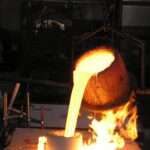FAQs
What is Intrinsic Value?
Ans: When someone invests in an asset, he does so in order to earn money from the business. The investor gets paid over a period of time as long as he is invested in the asset. Now intrinsic value is the present value of all such future cash flows generated by the asset. So logically one should not invest in any asset if the ask price is more than the intrinsic value of the asset.
Check Out The Intrinsic Value Of Tata Steel, Infosys, Vedanta, UPL
How is Intrinsic Value of a company calculated?
Ans: For calculating the intrinsic value of a company all its future cash flows are extrapolated based on the past performance of the company, assumptions about the future growth of the company and its terminal value. Once all these are calculated these are brought to the present date based on appropriate discounting rate. The sum of all these gives the intrinsic value of the company. It may be more or less than the market capitalization of the company. If it is more than the market capitalization of the company then the company is said to be undervalued and is a good bet as a long-term investment and vice versa.
Check Out The Intrinsic Value Of MRF, Maruti, Hero MotoCorp, Balkrishna Industries
How is Intrinsic Value of a share calculated?
Ans: Once intrinsic value of a company is calculated as explained above, it is divided by the total number of outstanding shares of the company. This gives the intrinsic value of a share.
Check Out The Intrinsic Value Of Shares Of Indian Companies
What is Discounted Cash Flow?
Ans: When we have cash flows that are spread over a period of time then Discounted Cash Flow method is used to calculate present value of all such cash flows. The present value depends on the discounting rate used. Usually 10 year Government bond yield rate(risk free rate of return) is used as the discounting rate.
Check Out The Intrinsic Value Of Companies Calculated Using Discounted Cash Flow
Explain the concept of Intrinsic Value Of A Company/Stock.
Ans:
The Money Machine –
Suppose you want to buy a machine that prints out Rs. 1000/- every year. How much should you pay for it?
To answer this question we will first make few assumptions
- Printing money is legal.
- Machine has zero maintenance and running costs.
- The machine will last forever.
Now let’s start the calculation.
Step 1: We have to make a table for this giving the payouts from the machine over the years to come.
| Year | 1 | 2 | 3 | 4 | 35 | 36 | 45 | 55 | 60 |
| Money Printed | 1000 | 1000 | 1000 | 1000 | 1000 | 1000 | 1000 | 1000 | 1000 |
For simplicity’s sake and limitation in presenting on A4 sheet we consider upto 60 years data and also consider the left-out years also in the list.
Now, since liquid cash is a depreciating asset, we have to work out the value of money printed by the machine in present day terms. For this we consider the risk-free rate of return as 12%.
Step2: Calculate Present value of cash printed by the machine
| Year | 1 | 2 | 3 | 4 | 35 | 36 | 45 | 55 | 60 |
| Money Printed | 1000 | 1000 | 1000 | 1000 | 1000 | 1000 | 1000 | 1000 | 1000 |
| Present Value | 892.86 | 797.19 | 711.78 | 635.52 | 18.94 | 16.91 | 6.10 | 1.96 | 1.11 |
Next step is to add all these amounts to get the present value of all the money printed out by the machine in its lifetime. Any amount printed after this period will not significantly change the present value.
Step 3: So, when we add the present values till 60years we get Rs. 8324.05.
Now this is the intrinsic value of the machine over its lifetime. If you pay more than this you will make a loss in that trade and if you pay less then you will be in profit.
Step 4: Now, we are ready to apply this concept to Stocks.
Any company is like this money-making machine with a few differences (these may not be all)
- We don’t know how much it will print out.
- It can keep printing more cash every year as it grows, but we do not know how much it will grow.
- It has an associated running and maintenance cost.
We cover these differences with our extrapolation based on past financial data and try to arrive at the cash flow generated by the company in future. And then we calculate the intrinsic value of the company in a similar fashion as we did above. So, if you buy the stock below the intrinsic value then it will pay for itself over a period of time and stock price appreciation will be a bonus (icing on cake). However, if you buy the stock above this value then you have to wholly depend on the stock price appreciation to justify your investment.
Continue To Home Page










